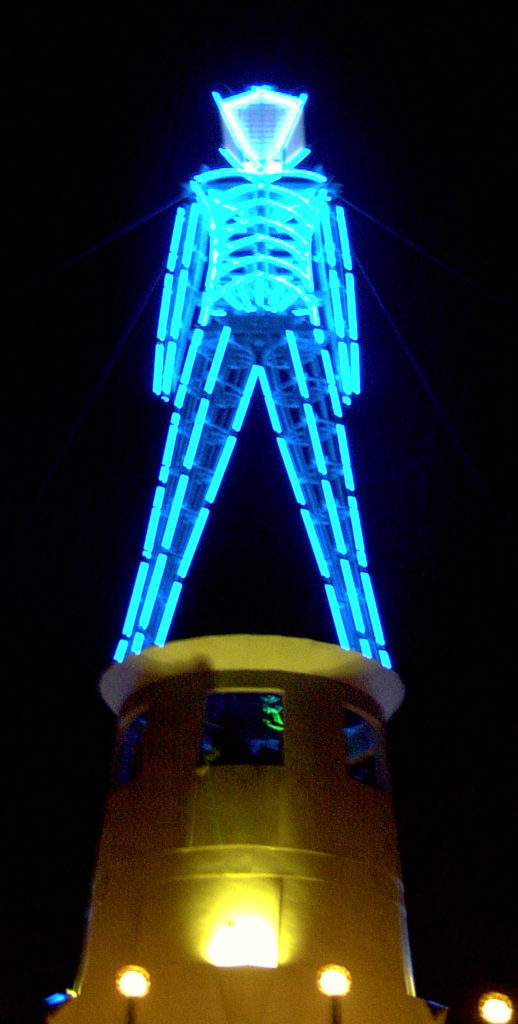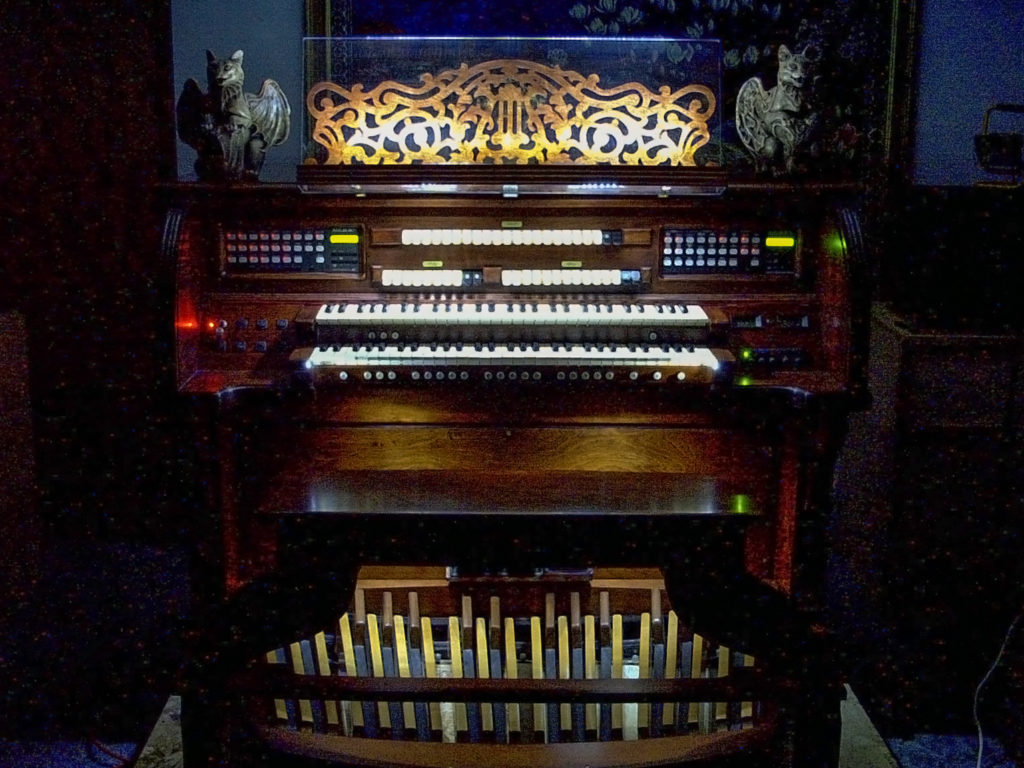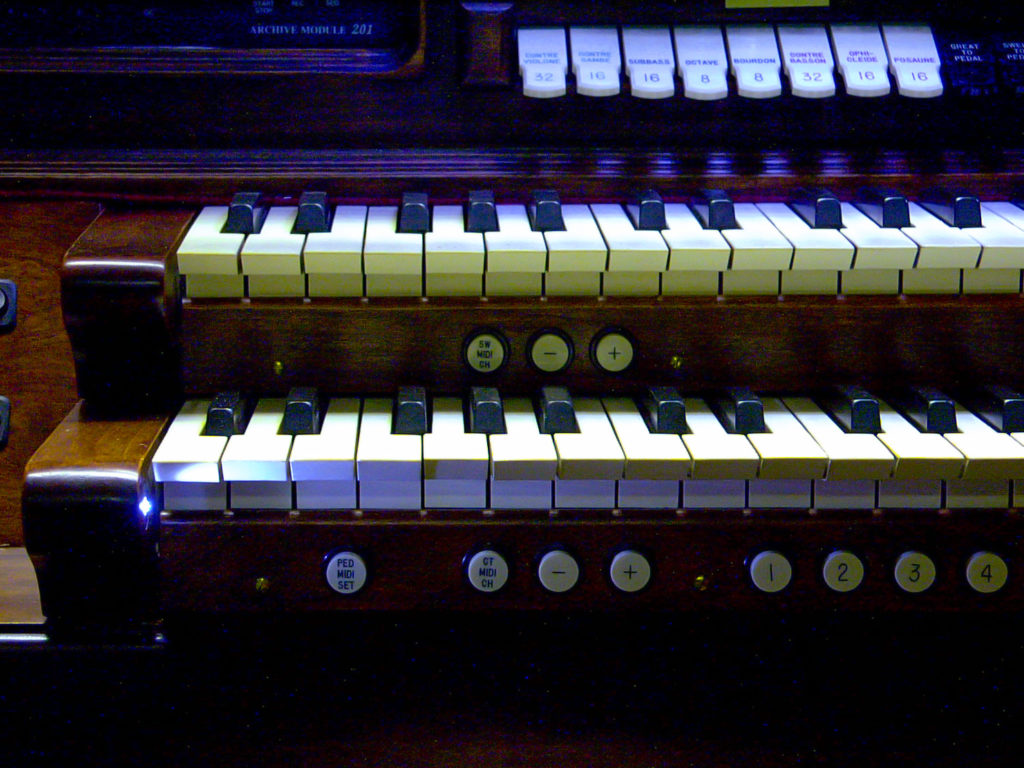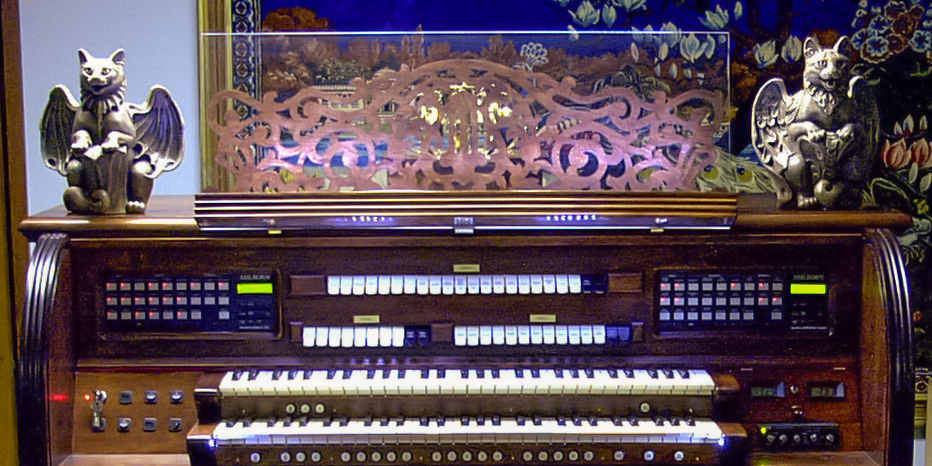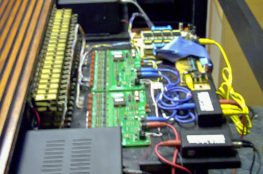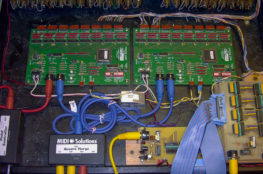All that Glows…
Lighting was very important for this project because some concerts would be performed in otherwise total darkness. But if one adds up the current draw of the typical 12V light bulbs used in consoles, they quickly become the primary consumer of power in a modern MIDI-based instrument.
White LEDs, relatively new to the market, were the answer. I bought them premounted in little strips from Led Lighting Systems, Inc. They draw very little power, and LEDs are typically rated at 120,000 hours mean time between failures, meaning if I ran the lights for 2 hours a day, every day, it might take 164 years for a LED to fail. We’ll see.
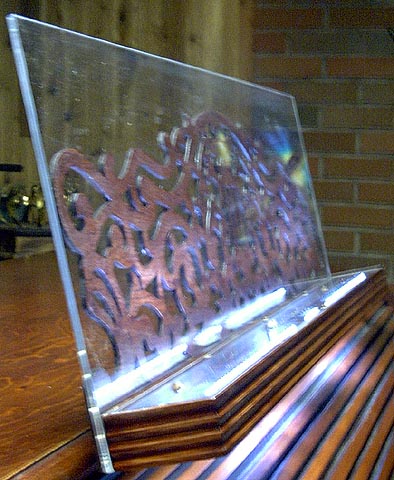
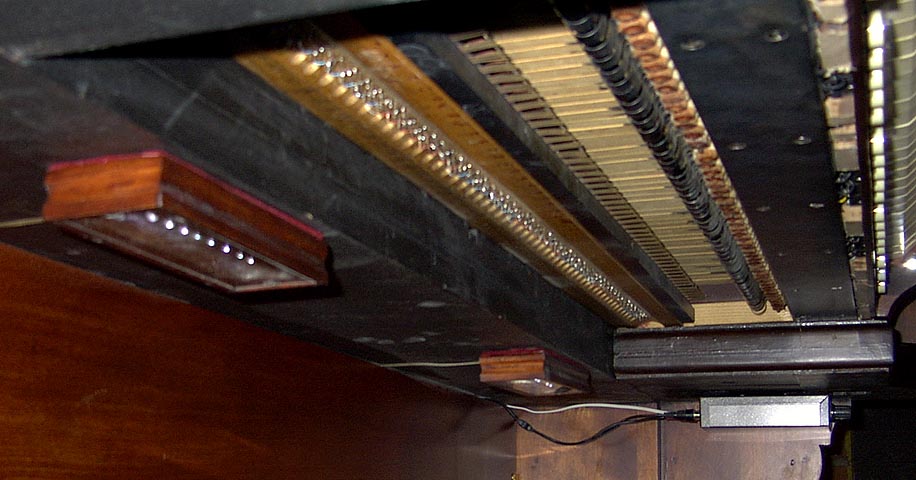
LEDs were placed in the music rack (facing up at the music and down at the keys), in the keyboard cheeks (a first?) to light the thumb piston rail, and pointing down at the pedals.
A nifty detail is that there was one LED left over, so it was made into a “wand” using an old ballpoint pen, and placed inside the console. It makes a handy flashlight for troubleshooting and it never gets lost.
A switch in the power distribution panel also allows for “Aux Lighting” – because the LEDs draw so little current, we may construct external light fixtures in the future. Sort of small spotlights, to be placed on high poles (mic. stands), these fixtures might be used to illuminate the performer from behind.
Odds and Ends
There are a few other things going on with the organ now that it has returned from the desert. An interesting item is that it won’t fit through the door of my current home – it has to rest in my folks’ basement until a new front door can be installed. (Update: The organ has been moved to its new home, with upgrades and restorations beginning in 2021.)
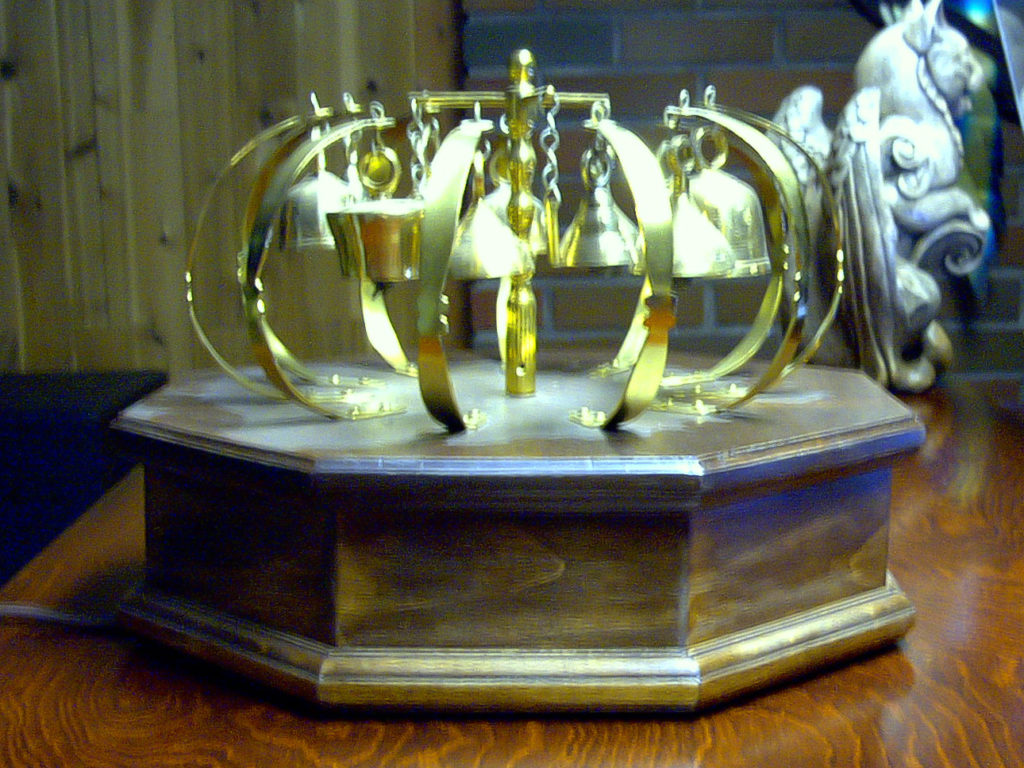
Some zymbelsterns resemble elaborate animated stars
atop the facade of a pipe organ.
Some time ago, my father built a batch of Zymbelsterns (little bells played semi-randomly by a motor to add sparkle to an organ registration) for Portland-area churches. We’ve had one in storage since selling the Rodgers, and now it sits proudly on top of the new desert organ. A dab of finish and it will match the woodwork, too.
The kitty gargoyles were a concept for the Burning Man display – since we couldn’t have a cathedral, we’d at least have gargoyles. The first of the pair, “Good Kitty”, was found in a gargoyle shop in Seattle. Its discontinued twin, “Evil Kitty”, wasn’t found until after Burning Man (the last on display in a shop in Portland), so there were no gargoyle kitties at Burning Man, at least not in our camp.
Conclusion and the Future
The experience of constructing this instrument, transporting it to the desert, performing once again (as an adult, to boot), and meeting so many wonderful people has been delightfully fulfilling. In many ways, the project turned out better than I intended. I hope that by recounting the details here on this web page, others may feel similarly inspired to express themselves musically and to help bring organ music to those who might not otherwise get the chance to hear it.
Many have asked me, “Will you be performing in the desert again?” The answer is “not this year”. For Burning Man 2003, I intend to take it easy and see more of other people’s camps and installations – to participate by joining in with others. Putting on the concerts required so much time and energy that I didn’t get to see much of Burning Man 2002, but that’s OK because I derived my fulfillment from the experience of performing and doing something new.
In the future, I hope to meld the organ into my MIDI synth system and start composing again. It would be fun to come up with some modern works for organ, and perhaps some recordings that blend (artfully, I hope) organ sounds with other synthesizer sounds into new combinations.
I hope you’ve enjoyed reading these pages – I would love to hear your comments or questions. Please feel free to drop me a line.
Bob Richardson
December, 2002
(With small corrections/updates in January, 2022)
